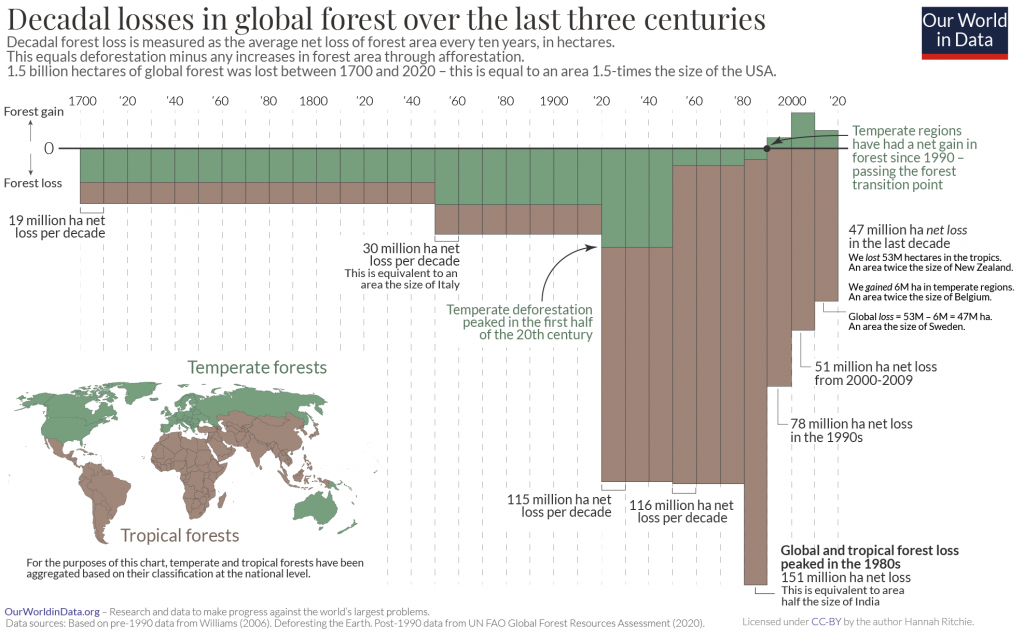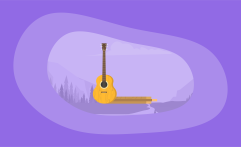How Sustainable Is Ipe Wood? Here Are the Facts
Impactful Ninja is reader-supported. When you buy through links on our site, we may earn an affiliate commission.
Learn more
Learn more
.
Hey fellow impactful ninja ? You may have noticed that Impactful Ninja is all about providing helpful information to make a positive impact on the world and society. And that we love to link back to where we found all the information for each of our posts. Most of these links are informational-based for you to check out their primary sources with one click. But some of these links are so-called "affiliate links" to products that we recommend. First and foremost, because we believe that they add value to you. For example, when we wrote a post about the environmental impact of long showers, we came across an EPA recommendation to use WaterSense showerheads. So we linked to where you can find them. Or, for many of our posts, we also link to our favorite books on that topic so that you can get a much more holistic overview than one single blog post could provide. And when there is an affiliate program for these products, we sign up for it. For example, as Amazon Associates, we earn from qualifying purchases. First, and most importantly, we still only recommend products that we believe add value for you. When you buy something through one of our affiliate links, we may earn a small commission - but at no additional costs to you. And when you buy something through a link that is not an affiliate link, we won’t receive any commission but we’ll still be happy to have helped you. When we find products that we believe add value to you and the seller has an affiliate program, we sign up for it. When you buy something through one of our affiliate links, we may earn a small commission (at no extra costs to you). And at this point in time, all money is reinvested in sharing the most helpful content with you. This includes all operating costs for running this site and the content creation itself. You may have noticed by the way Impactful Ninja is operated that money is not the driving factor behind it. It is a passion project of mine and I love to share helpful information with you to make a positive impact on the world and society. However, it's a project in that I invest a lot of time and also quite some money. Eventually, my dream is to one day turn this passion project into my full-time job and provide even more helpful information. But that's still a long time to go. Stay impactful,Affiliate Disclosure
Why do we add these product links?
What do these affiliate links mean for you?
What do these affiliate links mean for us?
What does this mean for me personally?
![]()
Ipe is a tropical wood that looks great and weathers well. It is the wood of choice for many outdoor projects like garden decking or fences. However, the trees are over-logged, and often illegally, in many parts of the world. And as the tropical rainforests, which are home to ipe species, support some of the richest ecosystems in the world, we had to ask: How sustainable is it to buy products made out of ipe wood?
In general, ipe wood is a sustainable wood thanks to trees’ carbon sequestration and carbon storage. Ipe trees are, however, vulnerable to overharvesting, to illegal logging, and generally have long transporting distances, making this tropical timber a less sustainable wood than most others.
In this article, we’ll walk you through the life-cycle of ipe wood used for household projects like garden decking or fencing. Then, we evaluate its sustainability, potentials, and shortfalls. And in the end, we’ll show you tips for buying sustainable padauk wood.
Here’s How Sustainable Ipe Wood Is
Ipe wood can come from different species and genera but as they are all marketed with the same common name, it makes it difficult to pinpoint the sustainability of individual logs.
However, the most frequently traded species have one thing in common: they tend to be overharvested in natural forests. Leaving ipe a much less sustainable wood choice than timber from temperate forests like pine or oak. Still, it is important to note that any wood is better for the environment than plastic. Especially when sourced from sustainably managed forests.
“Sustainable: The ability to be maintained at a certain rate or level | Avoidance of the depletion of natural resources in order to maintain an ecological balance”
Oxford Dictionary
To understand the sustainability of ipe wood, we assess the life-cycle of household projects like decking and fencing. This life-cycle assessment (LCA) is a method to evaluate the environmental impacts of each stage in a product’s life-cycle, from the making to the recycling. Over the years, companies have strategically used LCA to research and create more sustainable products.
In this article, we’ll use the cradle-to-grave perspective of the LCA, examining the five stages of the life-cycle of furniture made with ipe wood. Where it is relevant, we also use data from cradle-to-gate assessments.
| The life-cycle stages of ipe wood | Each stage’s sustainability |
| Growing of ipe wood | Growing ipe in its native tropical forests is sustainable because of carbon sequestration and carbon storage in the tree and its rooting system. However, logging practices are a cause for concern because of the rampant illegal poaching, overlogging, and wood originality fraud. Also, ipe trees are vulnerable to logging due to their naturally low densities, slow growth rates, and shade-intolerant seedlings. |
| Manufacturing of ipe wood | Turning ipe wood into furniture can have a relatively low carbon footprint when wood waste is utilized to make by-products or biomass pellets to offset the carbon emissions during harvesting and processing. Significant reduction in carbon emissions can also come from using fossil-free energy. |
| Transporting of ipe wood | Transporting ipe timber and furniture has a high carbon footprint, especially when furniture is sold in the US and Europe, far away from native ipe forests. |
| Usage of ipe wood | The usage of ipe wood is sustainable because the product usually lasts for a long time. |
| End-of-life of ipe wood | The end-of-life of mahogany wood is sustainable as the product can be upcycled or recycled for biomass energy. |
We’ll say that it is possible to find sustainable ipe products. However, the actual environmental impact of a particular product, like a fence or garden decking, depends on many factors, especially the forest management practices and the distance and mode of transportation. Let’s dive deeper into each stage and find out how it can be more sustainable.
How Sustainable Is the Growing Ipe Wood
Growing ipe in its native tropical forests is sustainable because of carbon sequestration and carbon storage in the tree and its rooting system. However, logging practices are a cause for concern because of the rampant illegal poaching, overlogging and wood originality fraud. Also, ipe trees are vulnerable to logging due to their naturally low densities, slow growth rates, and shade-intolerant seedlings.
What Type of Wood is Ipe and What Does This Mean for Sustainability
Ipe trees are tropical hardwood trees in the Bignoniaceae flowering plant family. There are three genera in the family (Handroanthus, Tabebuia, and Roseodendron) and each genus includes different species. Ipe, or one of the spelling varieties: ipé, ipee, ipê, ipe, is one of the common names used for their time. Other common names are Brazillian walnut and Lapacho.
Unfortunately, no existing identification guides cover all ipe species. However, most species are slow or medium growers with a low regeneration rate. For example, Tabebuia impetiginosa and Tabebuia serratifolia – two of the most exploited ipe species – grow less than 0.5 to 0.7 cm (more or less 0.2 inches) in diameter at breast height per year.
How Sustainable Is It Growing Ipe Trees for Wood
Living ipe trees can mitigate global warming impact through carbon sequestration. However, most of the ipe species are vulnerable to logging, making harvesting their wood much less sustainable than harvesting, for example, Douglas fir or maple timber.
- Low rate of regeneration: Most Ipe species have shade-intolerant seedlings. As the seedlings require large forest areas with little competition from other plants to reach the canopy, only a small percentage of seedlings get to the full size. And they reach maturity at a slow rate. In a study evaluating Tabebuia ipe logging in the Amazonia, the time needed to replace a population to commercial size is approximately 100 years. Thus, it is not sustainable to maintain a 30-year felling rotation as is current praxis.
- Low density: Ipe trees grow very sparsely: across their native forests, one mature (Tabebuia) ipe tree is found every 300,000 to 1,000,000 square feet. Loggers often end up cutting down a large area of forests (with many trees having little commercial value) to reach an ipe tree.
When ipe trees are grown in sustainably managed forests, the carbon sequestration and carbon storage in tree trunks and roots (as well as in timber and wood products) contribute to its being more sustainable than materials like wood plastic composite.
- Carbon sequestration: As ipe trees grow, they absorb CO2 from the atmosphere while releasing oxygen. During their lifespan, they act as a carbon sink. It means that they are taking greenhouse gases out of the atmosphere, helping to mitigate the climate crisis. And they can store a lot because they grow tall and large. In the Amazon, ipe trees can grow to 130 feet tall and six feet in diameter.
Where Is Ipe Wood Usually Grown
Ipe trees grow in tropical forests across Central and South America, stretching north-south from Mexico to Argentina. The various species grow in different conditions, including river banks, marshes, and atop ridges.
Ipe trees grow in Central and South American tropical forests – some of the world’s biodiversity hotspots. The Amazon rainforest alone hosts over three million species, including over 2,500 tree species. That is one-third of all tropical trees that exist on earth.
In such ecosystems, trees play an essential role as they provide needed food and shelter for animals. Handroanthus trees, for example, have a large number of flowers, which is an important food source for several species of bees and hummingbirds. As logging for ipe lumber often means cutting down all the surrounding trees, the loss of wildlife habitat multiplies.
Worse yet, most of the ipe species around the world are overharvested. In Brazil, for example, a weak licensing system and rampant illegal logging are causing serious damage to the Amazon, according to a 2018 report from Greenpeace Brazil. Because of fraud and corruption, timber from illegal logging operations in protected areas can end up in the supply chain.
Large-scale industrial timber plantations focusing on high-value species like Ipe are problematic because they tend to be much less biodiverse than the natural tropical forest areas they replace.
Such tropical forest loss for commercial products has devastating consequences. In total, logging of forestry products from plantations accounts for 26% of forest loss, which is a combination of deforestation and forest degradation. However, the loss in bio-diverse forests in tropical climates is more significant (and sometimes less properly recorded) than in temperate, well-managed logging forests.

How Sustainable Is the Manufacturing of Ipe Wood
Turning ipe wood into furniture can have a relatively low carbon footprint when wood waste is utilized to make by-products or biomass pellets to offset the carbon emissions during harvesting and processing. Significant reduction in carbon emissions can also come from using fossil-free energy.
The first step of manufacturing ipe furniture involves cutting down trees and turning them into lumber in a sawmill. Sawing is an electricity-consuming step. In a cradle-to-gate assessment of ipe deckings produced in northern Brazil, harvesting and sawmilling 1m3 results in less than 40kg CO2 eq emission. To put it in perspective, that is about two-thirds of the average emission of producing 2lbs of beef.
The next step is to dry lumber and turn it into furniture. Ipe can be air-dry or kiln-dry depending mostly on where the wood will be used. Ipe garden decking is often air-dried, which means a lower carbon footprint as no fossil fuel is needed for this step. A significant part of the energy required for wood drying can come from burning wood waste when using a kiln to dry wood. At least 90% of all thermal energy used for kiln drying in the US hardwood sector is derived from biomass.
Tropical woods like ipe do not require surface treatment thanks to a high content of natural oils, protecting the wood from fungi and pests. And no surface treatment means that less energy is required for producing and applying the treatment. And also that the furniture can be recycled fully at the end of its life, making it more sustainable.
How Sustainable Is the Transportation of Ipe Wood
Transporting is a carbon-intensive stage in the life cycle of ipe furniture due to the emissions associated with operating the hauling vehicles that take timber to sawmills and factories, then furniture to stores.
As ipe timber in the US would have come from Central or South America, ipe furniture would have a higher carbon footprint than furniture made with regionally available wood, like pine or white oak.
The actual emission during the transporting stage depends on the type of vehicles used, the fuel they need, and the distance the wood travels. Calculations made by the Norwegian Forest and Landscape Institute showed that smaller wood hauling trucks emitted more CO2 per transported cubic meters of timber: 1.25 times more than larger wood hauling trucks, 1.3 times more than sea vessels, and six times more than freight trains. Therefore, the sustainable transportation option would be rail or large trucks running on biofuel. You can check with your wood suppliers how their products are transported to and within the US and opt for the more sustainable option.
How Sustainable Is the Usage of Ipe Wood
Using ipe furniture can be sustainable thanks to the carbon capture during the products’ long life.
Ipe is exceptionally dense, hard, and durable. The timber is known for its resistance to attack by fungi and insects. Additionally, ipe wood stays in the same class as concrete and steel regarding fire rating. And in terms of lifespan, outdoor products made of ipe wood, such as a fence or garden decking, can last 50 years or even longer.
When ipe wood is decayed, either naturally in the forest or because of damage caused by usage at home, the carbon stored in the wood is released back to the atmosphere. Therefore, long-lasting furniture can be considered a good way of keeping carbon out of the atmosphere. If the wood is then reclaimed for making another piece of furniture, its positive carbon storage environmental impact is even higher.
How Sustainable Is the End-of-Life of Ipe Wood
The end-of-life stage for ipe furniture is sustainable when the wood is reused or burned as bioenergy.
There are a few scenarios for wood products – furniture, flooring, and household items – at the end of their life.
They can end up in landfills and don’t decompose. In this case, they’d keep their role as carbon storage.
Wood products can also be upcycled and reused, extending their role as carbon storage and reducing the fossil CO2 emitted as much as four times when comparing, for example, a recovered hardwood flooring with a new one. New wood products often travel much further to their markets, in the case of ipe, from South America to North America, compared with recovered wood products. The latter is typically made in urban centers and sold locally, which lowers the transportation environmental burdens.
In another end-of-life scenario, products like an ipe fence can be burned for biomass energy displacing coal or natural gas in generating electricity.
With smaller household items, like a doorknob or a small chair, the offset won’t be as high as there is much less waste for burning. However, if such products are made from manufacturing wood waste as by-products, their carbon footprint is minimal.
In a cradle-to-gate life cycle assessment of 1m3 garden deckings made with different materials in different parts of the world while being sold and used in Europe (Sweden), the Global Warming Potential (GWP) of ipe decking made in Brazil amounts to 265kg CO2 eq. It corresponds to driving an average petrol car for 1371 miles (2208km ).
The carbon footprint of decking made from ipe is higher than that made from local pine (172 kg CO2 eq) but lower than that made from concrete (412 kg CO2 eq). In this study, the footprint of Brazilian ipe timbers is only about one-seventh of wood plastic composite made in China.
How Can You Buy Ipe Wood More Sustainably
The key to sustainably buying any wood is to check on relevant environmental and original certifications. Reliable certifications for sustainable woods are:
An FSC certification ensures that the ipe wood comes from responsibly managed forests that provide environmental, social, and economic benefits.
PEFC’s approaches to sustainable forest management are in line with protecting the forests globally and locally and making the certificate working for everyone. Getting a PEFC certification is strict enough to ensure the sustainable management of a forest is socially just, ecologically sound, and economically viable but attainable not only by big but small forest owners.
Because there is a high risk of illegal or over logging for ipe timber, make sure you only buy ipe furniture with an FSC or PEFC certification. FSC-certified ipe wood does exist even though it is quite rare. For example, the Rainforest Alliance has been working with community forestry operations in Bolivia that harvest ipê and other timber species to ensure that they follow a strict sustainable forest management plan. The Bolivia-based Angel Sandoval Concession was one of the country’s first and largest businesses to become Forest Stewardship Council® (FSC) certified by the Rainforest Alliance. More than 3 million acres of Bolivian forests are FSC-certified, making it the third-largest FSC certifier in Latin America and the Caribbean.
Why Is It Important to Buy More Sustainable Wood
Buying sustainable wood also means helping to prevent illegal or unsustainable logging, which harms the forests’ biosystems and accelerates climate change.
Logging of forestry products from plantations accounts for 26% of forest loss. Cutting down trees for wood has a lesser impact on carbon storage than digging up the whole forest floor and turning it into farms or mines. However, if logging is not sustainably managed, it can badly damage wildlife.
When logging happens in tropical forests – the bio hotspots of our planet – the biodiversity loss can be much more damaging. Subtropical and tropical forests are packed with unique wildlife – endemic mammals, birds, and amphibians. The displacement of such wildlife during poorly managed logging would be a major contributor to global biodiversity loss.
Sustainable management of forests also means that trees are cut down for timber only when they are mature. These trees will then be able to regrow and eventually replace the loss of canopy, absorb carbon from the atmosphere and reduce the effect of climate change.

Final Thoughts
You can buy sustainable furniture made from ipe wood as long as the material comes from sustainably managed forests. However, because ipe is an imported tropical wood, it has a much higher transporting carbon footprint than hardwoods from temperate forests in the US. The widespread poaching in Brazil and other South American countries means you risk buying ipe timber from illegal, thus highly unsustainable, sources. Also, make sure you use any ipe furniture for as long as you can, upcycle the material to extend its usage, and arrange for it to be recycled fully.
Stay impactful,

Sources
- Reuters: Ditch metal and plastic and turn to wood to save the planet, says U.N.
- Science Direct: Life-cycle assessment (LCA)
- MIT SMR: Strategic Sustainability Uses of Life-Cycle Analysis
- European Environment Agency: cradle-to-grave
- Science Direct: Cradle-to-Gate Assessment
- CITES: Consultation on proposals to amend the CITES Appendices for timber species at the 18th meeting of the Conference of the Parties to CITES
- LANDSCAPE ARCHITECTURE MAGAZINE: A TRAIL OF STUMPS
- Impactful Ninja: How Sustainable Is Douglas Fir Wood? Here Are the Fact
- Impactful Ninja: How Sustainable Is Maple Wood? Here Are the Fact
- USDA: Evaluating ipeˆ (Tabebuia, Bignoniaceae) logging in Amazonia: Sustainable management or catalyst for forest degradation?
- THE WOOD DATABASE: IPE
- OKLAHOMA STATE UNIVERSITY: What is Wood Plastic Composite?
- PHYS.ORG: US, EU hardwood imports fuel Amazon destruction: Greenpeace
- Rainforest Alliance: IPÊ
- Greenpeace.org: Illegal logging of Ipê tree is causing irreversible damage to the Amazon
- Our World in Data: Deforestation and Forest Loss
- International Tropical Timber Organization: Checking the decking
- Our World in Data: The carbon footprint of foods: are differences explained by the impacts of methane?
- IPE WOOD USA: Air-Dried (AD) Or Kiln-Dried (KD) Hardwood Decking:
- American Hardwood: Environmental Life Cycle Assessment
- Natustyrelsen: Purchasing Tropical Timber
- Impactful Ninja: How Sustainable Is Pine Wood? Here Are the Facts
- Impactful Ninja: How Sustainable Is White Oak Wood? Here Are the Facts
- Science Norway: Larger logging trucks give less CO2 emissions
- Research Gate: Life cycle primary energy and carbon analysis of recovering softwood
- The carbon footprint of your garden decking
- FSC: FSC Statement on Myanmar’s Escalating Crisis
- Program for Endorsement of Forest Certification
- Our World in Data: Epidemic Mammal Species




